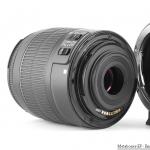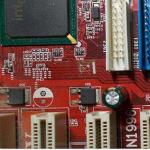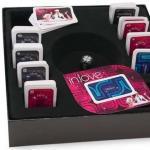About Canon - Sony E-mount adapters. About Canon - Sony E-mount adapters Different variations of adapters
I have in my hands a stack of adapters for different optics to the Sony E-mount. My friend is going to switch to Sony, or rather, to buy it as a second camera for video shooting to his Canon, and asked if I have adapters? Adapters were unexpectedly found: 4 for Canon, 2 for Nikon. Cheap, expensive and very expensive. I had to try them out.
Why are we talking about adapters at all? As soon as people, for some reason, are going to switch to Sony, they are faced with the problem of the cost of Sony optics, which is exorbitant. Sony has very good optics, but they are not budget-friendly at all and this is a serious problem. Some people use non-autofocus optics. Others are wondering - can we adapt the existing fleet of optics of another brand to Sony?
Judging by the number of adapters in my hands, we can. Therefore, it was decided to test in practice whether it is worth doing and how successful the result will be.
Having become acquainted with the principle of operation of the adapters, it turned out that they provide much more functionality than I expected. They provide not only a transition from one mount to another, but also provide some functions, often very interesting.
You can take a full-frame lens, place it through an adapter on a cropped matrix, and the adapter, thanks to its lenses, will collect the light beam and “shove” it into your crop, i.e. your crop will not be 1.5 or 1.7, but actually 1.1. The aperture increases by one step. Sounds like magic. Unfortunately, the price of such an adapter is also magical - about 60 thousand rubles. My adapters are somewhat cheaper - up to 36 thousand - which also cannot be said to be cheap.
Let's try to describe two typical scenarios for using adapters.
First, we want to save money. For example, you buy a first-generation Sony a7S, install a cheap fifty-kopeck piece from Zenit or FED through an adapter, and you can shoot, adding only 5-6 thousand rubles to the cost of the camera. From an economic point of view, this is significant.
The second scenario is that you already have a fleet of optics, for example, Canon. You want to buy Sony and use your optics. And this is where a lot of nuances begin. My adapters support focusing functions, incl. and tracking, and even turning on optical stabilization in a Canon lens. But only in photo mode. Unfortunately, in video mode, tracking autofocus is not supported on Canon optics, unlike native Sony optics, which focus excellently when shooting video. But you won’t get this convenience with Canon optics.
Further, when you buy autofocus adapters, autofocus will work well only on Sony cameras with phase focusing; there are only four such cameras today: a6300, a6500, a7RII and a7II. The focusing speed on them will be the same as on Canon cameras. On other Sony cameras (a7S, a7SII, a7R...) - you can assume that you do not have autofocus.
And that's not all the caveats. All adapters work very differently with each individual lens. And choosing an adapter for yourself can be a serious and difficult task. The adapter is a complex device, and its firmware supports certain lenses. The firmware should be updated regularly, which is also an extra hassle.
What if you have optics, for example, for Canon, but produced by third-party manufacturers (Tokina, Sigma, Tamron...)? Will it work for Sony? It will be, but also with nuances. My Tamron has a built-in stabilizer. So, on the most expensive Metabones adapter the stabilizer refused to work, but on the Sigma adapter it worked! And who could know about this, and where could one read about it? It turns out that you need to come to the store with a camera and your optics and select the optimal adapter.
By the way, Sony recommends using its cameras with recommended adapters. A Sony engineer, during, said that when they were preparing their adapter from A to E mount, they had to do a lot of work until they tested all possible optics on their adapters and made sure that it worked flawlessly in all modes, including .h. and when shooting video. Therefore, in the case of working with different bayonet glasses from Sony and Minolta, it is probably worth purchasing a native Sony adapter in order to get full operation of the optics in all modes.
On the other hand, if for some reason you still need to install third-party optics on Sony, adapters will allow you to do this, but try to choose them very carefully.
Metabones EF-E mount adapter (Mark III) review
Adapter (adapter) Metabones EF-E mount Mark III allows you to install lenses with a bayonet mount Canon EF And Canon EF-S for Sony cameras with mount Sony E.
The 'E' mount is used by interchangeable lens cameras Sony NEX, Sony ILCE (including a7, a7r, a7s), some Sony camcorders (NEX-FS and NEX-VG series) and, in addition, Hasselblad Lunar.

Lens and adapter Metabones EF-E mount adapter (Mark III)
The adapter has contact groups on both the lens and camera sides; the built-in microprocessor translates 'Sony signals' into 'Canon lens language' and back, resulting in full compatibility of the two systems.
When using this adapter, the following lens functions are retained:
- Auto Focus
- Aperture control
- Canon IS Image Stabilizer Operation
- Data transfer
- Supports many other features found in Canon lenses
- The adapter is hollow, without additional lenses, in no way affects the original image quality of the lens

Lens with Metabones EF-E mount adapter (Mark III) installed
I was very surprised when I saw with my own eyes how the lens came to life on the Sony a7R camera. When using such an adapter, the camera believed that it had a native lens installed on it - Sony 18-55mm F3.5-5.6 OSS. At the same time, all the necessary functions worked, even such as correcting vignetting and chromatic aberration. The only thing is that I had to use APS-C shooting mode due to the fact that it is designed for cropped cameras with an APS-C sensor.

Metabones EF-E mount adapter (Mark III) view
The adapter is very well made, almost all of metal and high-quality plastic. Supplied in a small box with two small L-shaped keys and two plugs.

Keys included in delivery and removed tripod foot
Using keys, you can remove the tripod foot and even disassemble the adapter, and plug the resulting holes with plugs. There is a tripod socket on the tripod foot. The foot is compatible with some tripod heads from certain manufacturers.

Marks for lens mount and camera mount
The adapter is powered by the camera, has a locking button for removing the lens and another additional button for fully opening the aperture. The aperture is automatically controlled from the camera; metering, as expected, always occurs with the aperture fully open, so I did not find any use for the aperture opening button. It is stated that such a button sometimes helps with manual focusing.

Lens and Metabones EF-E mount adapter (Mark III)
Installing such an adapter on the camera and lens is as easy and simple as attaching the lens to the camera :)

Programming port and aperture button
In addition, the adapter has a special connector, closed with a plug, through which it can be reprogrammed for full compatibility with almost any camera and lens. It is possible to reprogram it, but so far it has been stated that software for this does not exist :).

Metabones EF-E mount adapter (Mark III) for Sony a7r
When using this adapter with the lens, the autofocus speed was very slow, it was almost impossible to photograph with autofocus, even architecture and landscapes. The lens motor moves the lenses as quickly as if it were working on a native camera, but the Sony a7r takes a very long time to determine focus. Also, there is a huge list of lenses that are incompatible with this adapter, especially from third-party manufacturers. A huge number of different fine focusing settings are not supported either. There is a huge list of restrictions:
- Only native Canon lenses released no earlier than 2006 are officially supported. Most likely there will be no autofocus with old lenses
- Focus tracking and direct manual focus DMF are not supported
- Nex-FS camcorders will autofocus only in photo mode
- with some lenses, automatic focusing may simply freeze; to ‘unfreeze’ the lens, press the focus button again
- and so on:(

Canon lens on Sony a7R camera
When I used a similar combination, there were no problems other than focusing. On the Sony a7R it was much easier for me to use manual focusing mode with the peaking function, this speeded up sharpening significantly.

Connecting a Canon lens and a Sony a7r camera using Metabones EF-E mount adapter (Mark III)
A small gallery of pictures of this unusual bunch.



I bought the Sony A7R as a backdrop to my existing Canon and Nikon optics. Accordingly, through adapters.
With Nikon-F optics everything is clear: a mechanical adapter, everything is as always, more expensive adapters with a leash for Nikon-G, cheaper adapters without a leash, no imagination. They differ, as usual, in the quality of production, the quality of blackening, but there is nothing special to discuss. I have Metabones, but any other simpler one would do. Metabones differs in a positive way only in the large stroke of the aperture ring, but this is fundamentally important only for Nikon-G (and I don’t have such optics, I took the version for G-mount just in case, there’s a $40 difference).
With Canon the situation is completely opposite. The aperture control in these lenses is electronic, therefore you need chip, which will accept commands from the camera using the Sony protocol and translate them into Canon commands. In this case, both autofocus and stabilizer can work. Or it may not work. Or maybe nothing will work at all.
I now have two of these (Canon) adapters (it’s clear from the text why) and I have something to say about them (in relation to my fleet of optics and the Sony A7R camera).
- Works with almost all my optics except Canon 300/4L IS. However, I don’t have enough autofocus optics: Sigma 35/1.4, Canon: 70-200/4 IS, 135/2, 400/5.6, Tamron 28-75 (which is very old). It also works with non-autofocus Zeiss and Canons (the aperture closes, but nothing else is there).
- Autofocus is very conditional (very slow and jerks back and forth), but it is there.
- Workmanship: good, I like it.
- The internal shaft expands “outward”, for high-aperture optics there will be less vignetting, for slow-aperture optics it seems to be unimportant.
- The blackening of the mine is average. They write that for tilt shifts you need to seal it with self-adhesive velvet, I haven’t done it yet, I’m waiting for the self-adhesive to arrive.
- 300/4 earned. Well, that is, there is no autofocus, there is IS, the aperture works. I'm happy.
- Autofocus with other optics works worse than with Metabones: 28-75 focuses even more slowly, 135/2 does not focus at all, it jerks back and forth.
- Perhaps the autofocus of the 135/2 will be saved by upgrading the firmware (it’s wireless, there’s a USB adapter for this in the kit), but I won’t try it, I’m afraid that the 300/4 for which everything was started might fall off.
- Workmanship: good.
- Tripod heel wider than the standard Arca-style (both Metabones and RRS), but the RRS fits into the screw jaws. There may be problems with the latches.
- Mine does not expand outward, with high-aperture and Shift optics there will be problems with vignetting greater than with Metabones.
- The shaft is lined with velvet and is less shiny than Metabon's plastic.
Be prepared that you will need more than one EOS-NEX/A7 adapter.
In addition to Techart, there are also adapters labeled King on Ebay (cheaper, about $160) and even cheaper ones have begun to appear (now I see them for $108, but I’ve also seen them cheaper than $100). I don't know what they have inside.
It seems pointless to look at optics compatibility lists on Ebay - the same adapter may have different lists from different sellers. This could be a difference in the version of the firmware, or maybe (and most likely) they are simply copy-pasting from each other.
What if you want to use a lens that doesn't fit your camera? It would seem that you can take any lens, attach it to any camera, and you’ll be in order. But not everything is so simple, and the point is in the bayonet mount.
Bayonet– bayonet connection designed for attaching the lens to the camera. In addition to the mechanical connection between the camera and the lens, there are special contacts on the mount that allow the camera electronics to focus the lens and control the aperture using an electric drive built into the lens.
Mount on camera:
Lens mount: 
Different manufacturers or even camera lines may have different mounts, for example:
- Canon This E.F.(Electro-Focus) for full frame cameras and EF-S for cameras with matrix APS-C(kropov).
- Nikon This is an F mount.
- Sony, mount A ( Minolta A) and E mount ( E-Mount).
- Panasonic This Micro 4:3 (Micro Four Thirds System(MFT standard)).
- There is also an outdated threaded lens mount for single-lens reflex cameras. They are named by the diameter of the thread, for example - M42, M37, M39.
In fact, there are a lot of types of mounts; we have listed only a few.
So what should you do if the camera has one mount, but you want to use a lens with a different mount? This question becomes relevant when switching from a camera of one brand to another or if you need to use old Soviet lenses. The obvious solution is: adapter (adapter, shank, adapter ring) - a device that allows you to install on a camera lenses with a type of mount that does not match the mount of this camera.
There are a lot of adapters: dark and shiny, thin and thick, with and without contacts and lenses. 
But which variety should you choose and which one is better? Let's figure it out.
The adapter is simple.
There are no electronics in them, everything is simple. In essence, it is just a tube/ring with the necessary fasteners (bayonets) at the ends. Therefore, you can even take cheap Chinese ones.
Such adapters are usually used to use old Soviet optics, for example with a mount M42. Such optics are of good quality, provide excellent images and bokeh, allow you to change the aperture and sharpness manually and are very cheap, which is why they are so attractive. 
However, if with such adapters you use the lens with electronics, then you are in for a surprise. While sharpness can be adjusted by switching the lens to manual mode, the aperture is controlled only from the camera. And since the adapter does not support electronics, the aperture will always be as open as possible. 
Dangerous, do not repeat. Some people manage to place the lens on the camera for which it is intended, switch to video shooting mode, change the aperture to the desired one, and without turning off the camera, disconnect the lens, leaving the desired aperture. I would caution you against such manipulations so as not to damage the camera and lens.
You can also work with an open aperture without autofocus. Filmed using an adapter E-Mount - EF at the camera Sony A6300 with lens EF 70-200 f2.8 and got pretty good results. Well, with an adapter E-Mount – M42 It’s simply great to shoot, since the aperture is controlled manually and you can set it to whatever you need.
So, no electronics, everything is simple. Therefore, you can even take cheap Chinese ones, from Commlite, FOTGA or other manufacturers.
Adapter with electronics.
These are the same adapters as described above, but with electronics. They can be easily identified by their contacts.
With this adapter you can control the aperture from the camera, and there is also support for autofocus and lens stabilizer. However, not all lenses can perform well. Good manufacturers release and update firmware for adapters and add to the list of lenses used with the camera. 
There are many reviews and tests of specific models of adapters and lenses on the Internet, so we will not dwell on this in detail. In addition, manufacturers are constantly releasing new models and firmware for their products. 
Popular today: viltrox, Metabones, Sigma, FotodioX and others.
Another type of adapter can be considered an adapter from a camera brand, to adapters of the same brand, but to different mounts. For example, an adapter Sony LA-EA4. This adapter is designed for using Sony A-mount lenses on Sony E-mount cameras. The most interesting thing is that it supports all autofocus functions with any original lenses. And lenses with A mount are much cheaper than lenses with E mount.

Adapter with lens (Speed Booster).
To put it simply, this is the previous version of the adapter, but with a lens. And in more detail, this is a converter or Speed Booster- an optical device designed for installing shooting optics designed for a large frame size on cameras with a small matrix without losing the field of view of the lens. Typically, it converts the focal length of the lens to 0.71x, reduces crop factor and increases aperture lens on one step.
Example. The Sony A6300 camera has a crop factor of 1.5. 50mm on a full frame camera will equal 50mm. And the same 50mm on the A6300 camera will be equal to 75mm. Using Speed Booster, with a magnification factor of 0.71x, the lens will produce a 53mm focal length, not 75mm, which is almost a full frame.
Example. A Canon camera with an APS-C matrix has a crop factor of 1.6. 50mm on a full frame camera will equal 50mm. And the same 50mm on an APS-C camera will be equal to 80mm. Using Speed Booster, with a magnification factor of 0.71x, the lens will produce a 56mm focal length, not 80mm, and this is already close to a full frame.
Example. The crop factor of the sensor on a Micro 4/3 camera is 2. 50mm on a full frame camera will be 50mm. And the same 50mm on a Micro 4/3 camera will be equal to 100mm. Using Speed Booster, with a magnification factor of 0.71x, we get a focal length of the lens that is only 1.42 times greater. That is, the same 50mm lens will produce a focal length of 71mm, not 100mm.
The only disadvantage of such converters is their high price. Although converters from Chinese manufacturers are starting to appear on the market at affordable prices. Popular are Metabones, kipon or more affordable viltrox.
Different variations of adapters.
There are different variations from those described above. For example, an adapter with built-in aperture curtains is available. And despite the fact that the adapter does not have electronics, you can change the aperture using the adapter’s curtains. 
At the end of 2016 the company Kipon introduced an adapter from a bayonet mount Canon EF-S on Sony E With neutral density filter variable density. Using the wheel on the body, you can change the degree of darkening of the glass, thanks to which the exposure can be controlled in the range from 1.5 to 7 stops. Essentially this is a built-in neutral density filter in the adapter. By adjusting, you get the opportunity to shoot at open apertures in strong light. 
Macro rings.
Lenses have minimum focal length, usually it is 40-50 cm. There are also macro lenses, which allow you to focus at a closer distance. But overpay a significant amount for macro lens not always reasonable, because you can buy macro rings.
Macro rings- this is a set of ordinary adapter tubes that are installed between the lens and the camera, changing the parameters of the optical system. The greater the distance between the lens and the sensor, the closer you can get to the subject. For comfort, macro rings Sold in sets of 3 rings. Thus, by placing 1, 2 or 3 rings together, you can adjust the minimum focal length. 
Macro rings more expensive, equipped with contacts for lens autofocus. However, there is no point in buying these, the fact is that in macro photography you often have to focus manually, since autofocus at such short distances it does not give a good result and you still have to aim it manually. 
If you can suggest something, report an inaccuracy or discuss it, you can do this in our VKontakte group.





